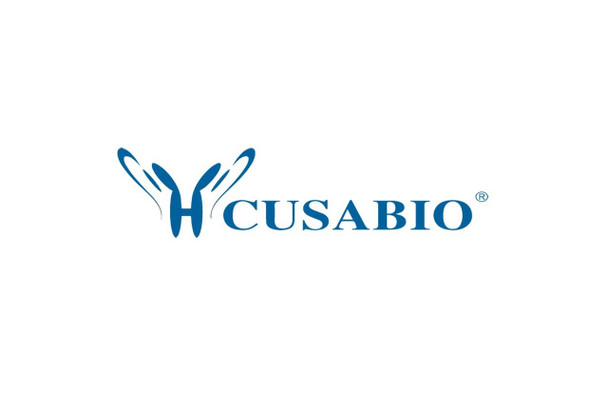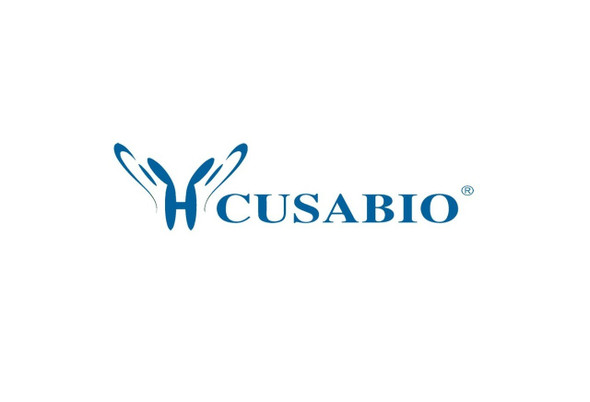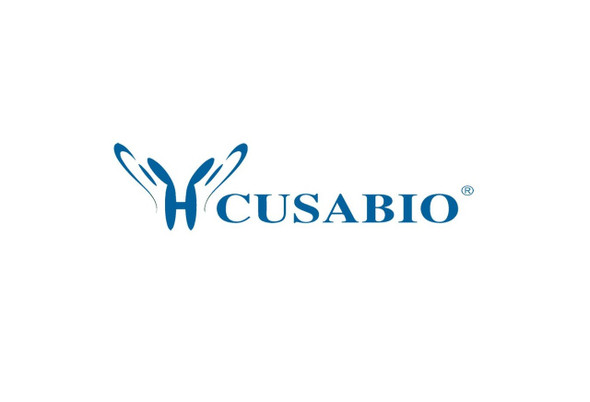Cusabio Human Recombinants
Recombinant Human S-arrestin (SAG) | CSB-YP020669HU
- SKU:
- CSB-YP020669HU
- Availability:
- 3 - 7 Working Days
Description
Recombinant Human S-arrestin (SAG) | CSB-YP020669HU | Cusabio
Alternative Name(s): 48KDA protein Retinal S-antigen Short name: S-AG Rod photoreceptor arrestin
Gene Names: SAG
Research Areas: Signal Transduction
Organism: Homo sapiens (Human)
AA Sequence: MAASGKTSKSEPNHVIFKKISRDKSVTIYLGNRDYIDHVSQVQPVDGVVLVDPDLVKGKKVYVTLTCAFRYGQEDIDVIGLTFRRDLYFSRVQVYPPVGAASTPTKLQESLLKKLGSNTYPFLLTFPDYLPCSVMLQPAPQDSGKSCGVDFEVKAFATDSTDAEEDKIPKKSSVRLLIRKVQHAPLEMGPQPRAEAAWQFFMSDKPLHLAVSLNKEIYFHGEPIPVTVTVTNNTEKTVKKIKAFVEQVANVVLYSSDYYVKPVAMEEAQEKVPPNSTLTKTLTLLPLLANNRERRGIALDGKIKHEDTNLASSTIIKEGIDRTVLGILVSYQIKVKLTVSGFLGELTSSEVATEVPFRLMHPQPEDPAKESYQDANLVFEEFARHNLKDAGEAEEGKRDKNDVDE
Source: Yeast
Tag Info: N-terminal 6xHis-tagged
Expression Region: 1-405aa
Sequence Info: Full Length
MW: 47.1 kDa
Purity: Greater than 90% as determined by SDS-PAGE.
Relevance: Arrestin is one of the major proteins of the ros (retinal rod outer segments); it binds to photoactivated-phosphorylated rhodopsin, thereby apparently preventing the transducin-mediated activation of phosphodiesterase.
Reference: "The sequence of human retinal S-antigen reveals similarities with alpha-transducin."Yamaki K., Tsuda M., Shinohara T.FEBS Lett. 234:39-43(1988)
Storage: The shelf life is related to many factors, storage state, buffer ingredients, storage temperature and the stability of the protein itself. Generally, the shelf life of liquid form is 6 months at -20?/-80?. The shelf life of lyophilized form is 12 months at -20?/-80?.
Notes: Repeated freezing and thawing is not recommended. Store working aliquots at 4? for up to one week.
Function: Binds to photoactivated, phosphorylated RHO and terminates RHO signaling via G-proteins by competing with G-proteins for the same binding site on RHO (By similarity). May play a role in preventing light-dependent degeneration of retinal photoreceptor cells
Involvement in disease: Night blindness, congenital stationary, Oguchi type 1 (CSNBO1); Retinitis pigmentosa 47 (RP47)
Subcellular Location: Cell projection, cilium, photoreceptor outer segment, Membrane, Peripheral membrane protein
Protein Families: Arrestin family
Tissue Specificity: Detected in retina, in the proximal portion of the outer segment of rod photoreceptor cells (at protein level).
Paythway:
Form: Liquid or Lyophilized powder
Buffer: If the delivery form is liquid, the default storage buffer is Tris/PBS-based buffer, 5%-50% glycerol. If the delivery form is lyophilized powder, the buffer before lyophilization is Tris/PBS-based buffer, 6% Trehalose, pH 8.0.
Reconstitution: We recommend that this vial be briefly centrifuged prior to opening to bring the contents to the bottom. Please reconstitute protein in deionized sterile water to a concentration of 0.1-1.0 mg/mL.We recommend to add 5-50% of glycerol (final concentration) and aliquot for long-term storage at -20?/-80?. Our default final concentration of glycerol is 50%. Customers could use it as reference.
Uniprot ID: P10523
HGNC Database Link: HGNC
UniGene Database Link: UniGene
KEGG Database Link: KEGG
STRING Database Link: STRING
OMIM Database Link: OMIM










